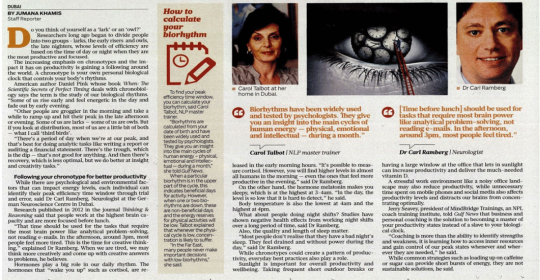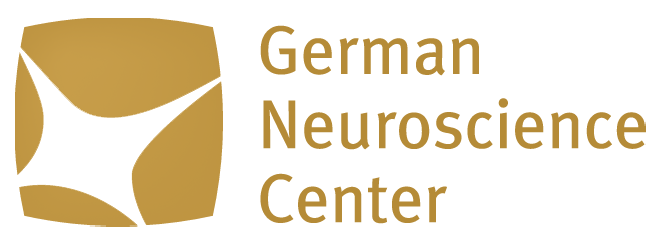
How To Maximize Your Productivity? Dubai Neurologist, Dr Carl, Explains The Science Behind Peak Performance Times – Gulf News
Does the 9-5 workday maximise efficiency? Or would companies be better off paying attention to employee chronotype? Do you think of yourself as a ‘lark’ or an ‘owl?’
Researchers long ago began to divide people into two groups – larks, the early risers and owls, the late nighters, whose levels of efficiency are based on the time of day or night when they are the most productive and focused.
The increasing emphasis on chronotypes and the impact it has on productivity is gaining a following around the world. A chronotype is your own personal biological clock that controls your body’s rhythms.
American author Daniel Pink whose book When: The Scientific Secrets of Perfect Timing deals with chronobiology says the term is the study of our biological rhythms. “Some of us rise early and feel energetic in the day and fade out by early evening.
“Other people are groggier in the morning and take a while to ramp up and hit their peak in the late afternoon or evening. Some of us are larks — some of us are owls. But if you look at distribution, most of us are a little bit of both — what I call ‘third birds’.
“There’s a period of day when we’re at our peak, and that’s best for doing analytic tasks like writing a report or auditing a financial statement. There’s the trough, which is the dip — that’s not good for anything. And then there’s recovery, which is less optimal, but we do better at insight and creativity tasks.”
Following your chronotype for better productivity
While there are psychological and environmental factors that can impact energy levels, each individual can identify their peak efficiency time window through trial and error, said Dr Carl Ramberg, Neurologist at the German Neuroscience Centre in Dubai.
Research published in 2012 in the journal Thinking & Reasoning said that people work at the highest brain capacity and are more focused before lunch.
“That time should be used for the tasks that require the most brain power like analytical problem-solving, not reading e-mails. In the afternoon, around 3pm, most people feel more tired. This is the time for creative thinking,”
explained Dr Ramberg. When we are tired, we may think more creatively and come up with creative answers to problems, he believes.
Hormones play a big role in our daily rhythm. The hormones that “wake you up” such as cortisol, are released in the early morning hours. “It’s possible to measure cortisol. However, you will find higher levels in almost all humans in the morning — even the ones that feel more productive in the evening,” said Dr Ramberg.
On the other hand, the hormone melatonin makes you sleepy, which is at the highest at 3-4am. “In the day, the level is so low that it is hard to detect,” he said.
Body temperature is also the lowest at 4am and the highest at 4pm.
What about people doing night shifts?
Studies have shown negative health effects from working night shifts over a long period of time, said Dr Ramberg.
Also, the quality and length of sleep matter.
“Most people don’t realise that they have a bad night’s sleep. They feel drained and without power during the day,” said Dr Ramberg.
While chronotypes could create a pattern of productivity, everyday best practices also play a role.
Sunlight is important for overall productivity and wellbeing. Taking frequent short outdoor breaks or having a large window at the office that lets in sunlight can increase productivity and deliver the much-needed vitamin D.
A stressful work environment like a noisy office landscape may also reduce productivity, while unnecessary time spent on mobile phones and social media also affects productivity levels and distracts our brains from concentrating optimally. […]
The full original article was published in Gulf News

